Listening Structures: Difference between revisions
No edit summary |
mNo edit summary |
||
| Line 13: | Line 13: | ||
These listening sculptures were developed as a way to capture and manipulate ideas during group discussions. | These listening sculptures were developed as a way to capture and manipulate ideas during group discussions. | ||
Conducting qualitative research as part of ''Infrastructural Interactions'', ''Entanglements'' and ''AI Justice Matrix'' workshops involved gathering materials form participants in the form of audio, text and video, sometimes live, sometimes not, | Conducting qualitative research as part of ''Infrastructural Interactions''<ref><small>''Infrastructural Interactions: Survival, Resistance and Radical Care'', edited by Helen V Pritchard, and Femke Snelting. Brussels: The Institute for Technology In the Public Interest, 2021.</small> http://titipi.org/pub/Infrastructural_Interactions.pdf | ||
</ref>, ''Entanglements'' and ''AI Justice Matrix''<ref>Boudiaf, Yasmine 2021, ''AI Justice Matrix'', accessed Nov 2021,https://aijusticematrix.com/</ref> workshops involved gathering materials form participants in the form of audio, text and video, sometimes live, sometimes not, soetimes in a group setting, sometimes alone. | |||
Participant content would be captured, analysed, interpreted, reduced and added to by the researcher. In this linear process, the final form becomes somewhat detached from the originator’s intent - the originator loses control, they are not there to reattach meaning at the point of reporting. A distance is immediately formed, increasing with time and number of mediums the content flows through. | Participant content would be captured, analysed, interpreted, reduced and added to by the researcher. In this linear process, the final form becomes somewhat detached from the originator’s intent - the originator loses control, they are not there to reattach meaning at the point of reporting. A distance is immediately formed, increasing with time and number of mediums the content flows through. | ||
| Line 21: | Line 23: | ||
A source of influence often left out of this process is that of other participants. There may be group discussions, but the researcher leads the discourse, and the participants are under their gaze. It’s difficult to discern what effect this may have on the participant’s output. | A source of influence often left out of this process is that of other participants. There may be group discussions, but the researcher leads the discourse, and the participants are under their gaze. It’s difficult to discern what effect this may have on the participant’s output. | ||
=== Listening === | ===Listening=== | ||
Having a space that participants add thoughts to anonymously as they arise may help to reduce participants’ inhibitions. | Having a space that participants add thoughts to anonymously as they arise may help to reduce participants’ inhibitions. | ||
| Line 30: | Line 32: | ||
This side-system of qualitative data gathering adds value to a research project through capturing contributions that would have otherwise remained as thoughts in participants’ minds. It can also continue to exist beyond the lifespan of a research project, in acknowledgement that not all meaningful contributions can be captured in a prescribed session. | This side-system of qualitative data gathering adds value to a research project through capturing contributions that would have otherwise remained as thoughts in participants’ minds. It can also continue to exist beyond the lifespan of a research project, in acknowledgement that not all meaningful contributions can be captured in a prescribed session. | ||
=== Using the Listening Structures === | ===Using the Listening Structures=== | ||
These are diagrams made of geometric shapes to aid in collective idea development. As ideas travel through these structures the nature of these ideas changes, providing a geometric framework for them to develop.<blockquote>'''FLOATING THOUGHTS:''' A suspension of thoughts just existing. | These are diagrams made of geometric shapes to aid in collective idea development. As ideas travel through these structures the nature of these ideas changes, providing a geometric framework for them to develop.<blockquote>'''FLOATING THOUGHTS:''' A suspension of thoughts just existing. | ||
| Line 43: | Line 45: | ||
'''DEEP FISSURES:''' A space to acknowledge silences, omissions and redactions. For unvoiced thoughts and dismissed feelings.</blockquote>The Listening Structures are drawn on a non-extractive collective drawing pad, Excalidraw. The original pad should not be edited, but rather a copy should be made and populated so that the original stays empty and useful to others, however, new, empty structures can be added to the original pad that others may find useful. | '''DEEP FISSURES:''' A space to acknowledge silences, omissions and redactions. For unvoiced thoughts and dismissed feelings.</blockquote>The Listening Structures are drawn on a non-extractive collective drawing pad, Excalidraw. The original pad should not be edited, but rather a copy should be made and populated so that the original stays empty and useful to others, however, new, empty structures can be added to the original pad that others may find useful. | ||
# Visit https://excalidraw.com/#json=6497964574900224,Ps6Si-EVmnSHpavjSZKVPg
| #Visit https://excalidraw.com/#json=6497964574900224,Ps6Si-EVmnSHpavjSZKVPg
| ||
# Click “Export”
| #Click “Export”
| ||
# Click “Export to Link” (wait a while until there is a pop up window with a new link)
| #Click “Export to Link” (wait a while until there is a pop up window with a new link)
| ||
# Copy and paste the link into a browser window and edit your version of the structures as you like. | #Copy and paste the link into a browser window and edit your version of the structures as you like. | ||
===References=== | |||
<small>Cite as: Boudiaf. Yasmine. 2021. "Listening structures". In Infrastructural Interactions: Survival, Resistance and Radical Care, edited by Helen V Pritchard, and Femke Snelting. Brussels: The Institute for Technology In the Public Interest. http://titipi.org/pub/Infrastructural_Interactions.pdf</small> | <small>Cite as: Boudiaf. Yasmine. 2021. "Listening structures". In Infrastructural Interactions: Survival, Resistance and Radical Care, edited by Helen V Pritchard, and Femke Snelting. Brussels: The Institute for Technology In the Public Interest. http://titipi.org/pub/Infrastructural_Interactions.pdf</small> | ||
Revision as of 17:43, 28 November 2021
Listening Structures
Yasmine Boudiaf
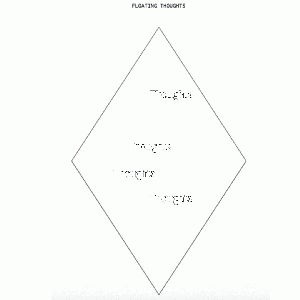
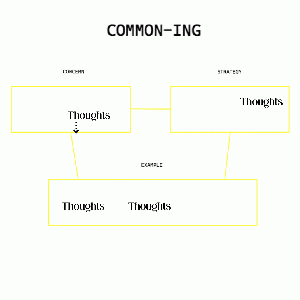
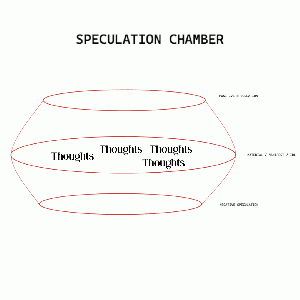
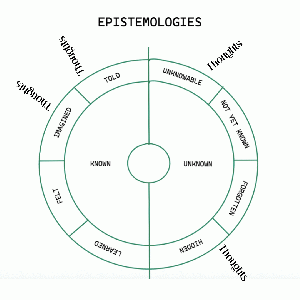
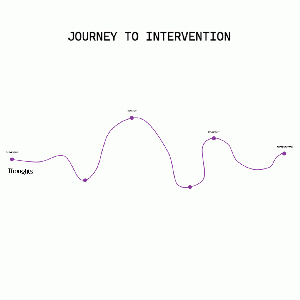
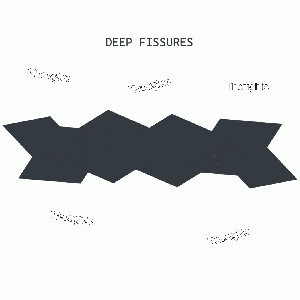
Research in practice
These listening sculptures were developed as a way to capture and manipulate ideas during group discussions.
Conducting qualitative research as part of Infrastructural Interactions[1], Entanglements and AI Justice Matrix[2] workshops involved gathering materials form participants in the form of audio, text and video, sometimes live, sometimes not, soetimes in a group setting, sometimes alone.
Participant content would be captured, analysed, interpreted, reduced and added to by the researcher. In this linear process, the final form becomes somewhat detached from the originator’s intent - the originator loses control, they are not there to reattach meaning at the point of reporting. A distance is immediately formed, increasing with time and number of mediums the content flows through.
Whilst it’s considered good academic practice to maintain the integrity of original sources, this is not always realistic, because of the sheer volume and complexity of data to analyse. The role of a researcher is not to just collect and present raw data, they use personal judgement to add context and curate output. They navigate systems of ethics and values imposed by their institutions and funders. Some contributors, for example, may not want to be attributed, some contributions are left out of the reporting altogether. The researcher makes decisions on how content mutates, influenced by internal as well as external forces.
A source of influence often left out of this process is that of other participants. There may be group discussions, but the researcher leads the discourse, and the participants are under their gaze. It’s difficult to discern what effect this may have on the participant’s output.
Listening
Having a space that participants add thoughts to anonymously as they arise may help to reduce participants’ inhibitions.
There are inherent power asymmetries and roles that individuals have during group discussions. What would listening look like when these roles were no longer visible, and participants were not confined by conversational dynamics (such as waiting for your turn to speak)? The listening becomes detached from any person yet at the same time, everyone becomes the listener, as each participant is presented with the output at the same time.
This distributed listening becomes active distributed listening when participants have access to the platform where contributions are collected and are able to manipulate them. These contributions, or thoughts, take on a life of their own; they are picked up and moved around by anyone, built on, manipulated and challenged. Half-formed ideas can manifest, and be made whole by someone else.
This side-system of qualitative data gathering adds value to a research project through capturing contributions that would have otherwise remained as thoughts in participants’ minds. It can also continue to exist beyond the lifespan of a research project, in acknowledgement that not all meaningful contributions can be captured in a prescribed session.
Using the Listening Structures
These are diagrams made of geometric shapes to aid in collective idea development. As ideas travel through these structures the nature of these ideas changes, providing a geometric framework for them to develop.
FLOATING THOUGHTS: A suspension of thoughts just existing.
COMMON-ING: Taking consistent themes, grouping them, making links between them.
SPECULATION CHAMBER: Taking real-world phenomena and imagining positive and negative versions.
EPISTEMOLOGIES: Displaying sources of knowledge and comparing their validity.
JOURNEY TO INTERVENTION: The path ideas take in order to produce meaningful interventions.
DEEP FISSURES: A space to acknowledge silences, omissions and redactions. For unvoiced thoughts and dismissed feelings.
The Listening Structures are drawn on a non-extractive collective drawing pad, Excalidraw. The original pad should not be edited, but rather a copy should be made and populated so that the original stays empty and useful to others, however, new, empty structures can be added to the original pad that others may find useful.
- Visit https://excalidraw.com/#json=6497964574900224,Ps6Si-EVmnSHpavjSZKVPg
- Click “Export”
- Click “Export to Link” (wait a while until there is a pop up window with a new link)
- Copy and paste the link into a browser window and edit your version of the structures as you like.
References
Cite as: Boudiaf. Yasmine. 2021. "Listening structures". In Infrastructural Interactions: Survival, Resistance and Radical Care, edited by Helen V Pritchard, and Femke Snelting. Brussels: The Institute for Technology In the Public Interest. http://titipi.org/pub/Infrastructural_Interactions.pdf
- ↑ Infrastructural Interactions: Survival, Resistance and Radical Care, edited by Helen V Pritchard, and Femke Snelting. Brussels: The Institute for Technology In the Public Interest, 2021. http://titipi.org/pub/Infrastructural_Interactions.pdf
- ↑ Boudiaf, Yasmine 2021, AI Justice Matrix, accessed Nov 2021,https://aijusticematrix.com/